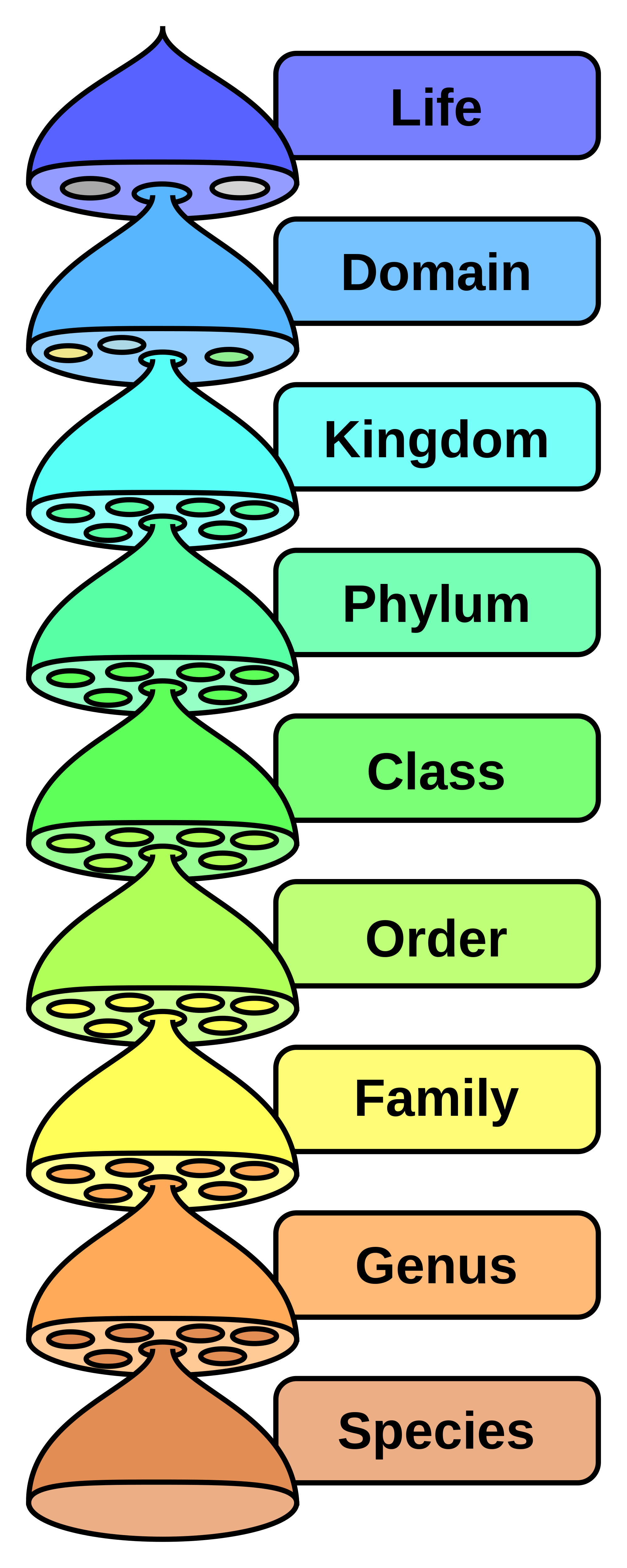The Qur’an teaches us that, unlike other creatures, the modern humans who are anthropologically classified as Homo sapiens sapiens have been created to be Allah’s Vice-regents (deputies or agents) on this earth.
As mentioned in the Qur’anic verses (Surat Al-Baqarah 2:30, Surat Fatir 35:39, Surat Sad 38:26) of the nearly 9 million species on this planet, only one can consciously decide how to have an impact on the evolution of life on this planet. That species is Homo sapiens sapiens.
Religion provides guidance and direction to enable humans to be good Vice-regents of God rather than be destroyers of society and nature.
The Qur’an also teaches that we should be able to see the majesty of God by seeing that God has created humans in different, successive stages (Surat Nuh 71:14) and has caused us to grow from earth like a plant.
(71:17) If for some reason we do not want to see God’s majesty in the evolution of life in general, and human beings in particular, there is something the matter with us. (71:13) If this is so, why do some people (primarily evangelical Protestants) think there is a great conflict between evolution and religion.
Usage of Word “Human”
 A great deal of unnecessary conflict and misunderstanding has been caused by the careless use of the terms ‘human’ and ‘man’ by evolutionists to describe the increasing number of fossil finds of tool using biped primate species (over a dozen now) some of whom were ancestral to Homo sapiens sapiens.
A great deal of unnecessary conflict and misunderstanding has been caused by the careless use of the terms ‘human’ and ‘man’ by evolutionists to describe the increasing number of fossil finds of tool using biped primate species (over a dozen now) some of whom were ancestral to Homo sapiens sapiens.
I shall try to refer to each distinct species by its scientific name only. Recent fossils found on Flores Island in Indonesia in September 2003 are from a new species of tool using bipeds named Homo Floresiensis that lived as recently as 20,000 years ago. They weren’t pygmy Homo sapiens sapiens.
They used fire (in use by pre Homo Sapiens species for more than half a million years) and made stone tools, but we don’t yet know if there is any evidence of ritual burials, which are the earliest forms of non-material cultural/religious activity.
Most people think that the name ‘human’ or ‘mankind’ should be reserved only for our own species. Not using the name ‘human’ and ‘man’ carelessly would help resolve most of the conflict over the theory of evolution.
The theory of evolution can help us understand why religion is so important for human survival; and why religion is universal.
Indeed, modern Homo sapiens sapiens would be better named Homo Religiosus, a term used by many scholars in religious studies and anthropology.
The evolution of spiritual activities that enhance the successful survival of humanity is not only concerned with enhancing the survival of our own species.
With the recent domestication of plants and animals and the very recent industrial revolution, Homo sapiens sapiens (Hss) acquired a great deal of responsibility for the evolution of most of the species on the planet itself.
The ability to genetically modify both plants and animals gives humanity a significant role in the future evolution of life. Thus the behavior of religious people themselves now becomes a factor in the evolution of life on earth.
Role of Religious Thinking
Religious behaviors are evidence of self-conscious creative thought processes most people associate with Homo sapiens sapiens.
Religious behaviors are the creative responses of intelligent minds to certain challenges in social and personal life.
Since only humans of the millions of species on this planet, can consciously have an impact on the evolution of life; it is only natural that God has inspired thousands of individuals (124,000 according to Muslim tradition) to urge their own communities to live according to God’s will.
But first God had to prepare ancient humans (pre Adam) to be receptive to the words of the prophets. Although no one knows exactly how God works; the following scenarios seem reasonable to me.
All sentient beings are able to respond to the challenges of life. In each species some individuals respond to new environmental challenges better than others do; and their descendants increase.
Some sentient beings that are conscious are capable of learning from the challenges of life. They can improve themselves.
A few are even able to show others what they have learned and thus improve their group and their descendants’ chances of survival. These species have developed cultural ways of meeting life’s challenges.
What Makes Us That Way?
For many centuries it was thought that mankind’s ability to use tools was what made us unique. However, we now know that several different species use tools (including birds) and Chimps not only use but also make at least three different kinds of tools for different functions.
Chimp tool use differs in different locations (a cultural not a genetic difference). Chimps also show signs of self-awareness by recognizing themselves in a mirror. So what makes us what we are?
First, we are a small group, hierarchically organized, social primates. Any genes that enable the group (extended family and/or band) to function better will contribute to individual survival and reproduction.
Second, the species that preceded the Homo Sapiens and Homo Neanderthal have been evolving larger and larger brains for several million years.
Eventually two species, Homo Sapiens and Homo Neanderthal evolved that achieved self-conscious ways of meeting life’s challenges through non-material i.e. cultural and spiritual behaviors.
(Homo Neanderthals is a species physically close to Homo Sapiens whose last common ancestor shared with Homo Sapiens lived about 660,000 years ago according to a DNA study published in 2008.
Neanderthals co-inhabited in Europe and parts of western Asia with HS- anatomically modern humans, from about 120,000 to 29,000 years ago.
Neanderthals were well adapted to the cold and were very muscular. They had slightly larger brains than HS).
Increasing dependence on mental capacities became problematic for those individual Neanderthals and Homo Sapiens who malfunctioned mentally.
Any genes that would help correct or ameliorate individual mental challenges would be selected for and would spread throughout the population.
Spiritual activities among Homo sapiens sapiens have evolved over the last 120-160,000 years.
If one takes seriously the Biblical claim that humanity was created in the Divine image, spiritual evolution testifies to the creation of creatures who are vice-regents of purpose driven non-material responses to environmental and social challenges.
Our Own Story
Homo sapiens sapiens faced at least half a dozen different challenges over the last 150,000 years that stimulated spiritual developments that improved survival rates both for groups and individuals within the group.
One of the greatest challenges to increased intellectual development is anxiety and self-imposed stress.
The more Homo sapiens sapiens can think about things, the greater the ability to produce anxiety and self-imposed stress that are debilitating by themselves, and also depress the immune system.
Anything that reduces stress and anxiety increases survival rates for intelligent minds.
Also as successful groups got larger it became harder and harder to keep them from internal conflict and splitting.
Larger groups, or groups with strong alliances, were more likely to win when there was intergroup conflict and had reduced negative effects from inbreeding.
Anything that helped larger groups create bonds that were more than a family, and behavioral norms that were more than mimicking would increase survival rates. Individuals with a mental illness couldn’t contribute much to a tribe or band.
Anything that helped heal or integrate these individuals would help survival rates. These are some of the situations faced by a species that began using its mind more and more.
The first challenge is also the ultimate one: death. Homo sapiens sapiens is the only living species that knows in advance that death is inevitable.
 Genesis 2:17 teaches “on the day you eat it (the tree of knowledge of good and evil, you will know) you will surely die.”
Genesis 2:17 teaches “on the day you eat it (the tree of knowledge of good and evil, you will know) you will surely die.”
Elephants, Chimpanzees and Orangutans have been observed to mourn for a dead child, but no other living species practices ritual burial.
The intelligent minds of Homo sapiens sapiens responded to the death of loved ones by creating funeral rites and rituals of ancestor worship.
Evidence from Qafzeh cave in northern Palestine of ritual burial and grave goods (red ocher and mollusk shells of an inedible species) goes back 100 -120,000 years or more.
These funeral rituals brought comfort and solace to the mourners. Funeral rituals also had the important effect of strengthening group solidarity at a time when leadership might be challenged and changing.
Strengthening group solidarity reduced internal conflict and violence thus increasing the chances of raising children to adulthood.
Although other species also dream, the intelligent minds of Homo sapiens sapiens creatively concluded that dreams about the dead showed that the dead were still active and could continue to help their descendants.
Thus departed spirits ought to be venerated and worshiped. It is possible that nomadic hunter-gatherer bands used the skulls of important individuals in community rituals for many centuries.
Two Homo sapiens sapiens skulls from Herto in Ethiopia, well worn through handling, have been dated to more than 140,000 years ago.
These ritual activities strengthened feelings of kinship within and among hunter-gather bands enabling them to be more stable and grow larger.
This in turn increased the chances for survival of individuals within the more effective bands and clans.
Ritual activities and ideas about help available from deceased ancestors reduced stress and anxiety and so led Homo sapiens sapiens to expand the realm of spirits to the treatment of physical and mental illness.
References:
- Darwin’s Cathedral: Evolution, Religion, and the Nature of Society.
- David Sloan Wilson University of Chicago Press 2002.
- The God Part of the Brain.
- Matthew Alper. Sourcebooks Naperville Ill. 2006.
- Religion Explained: The Evolutionary Origins of Religious Thought.
- Pascal Boyer. Basic Books 2001.
- The Origin and Evolution of Cultures.
- Robert Boyed and Peter Richerson Oxford University Press 2005.
- The Spiritual Brain.
- Mario Beauregard and Denyse O’Leary Harper One N. Y. 2007.
- Why God Won’t Go Away: Brain Science and the Biology of Belief.
- Newberg, D’Aquili and Rause Ballantine Books N.Y. 2001.
- Wondrous Healing: Shamanism, Human Evolution and the Origin of Religion.
- J. McClennon Northern Illinois University Press 2002.
